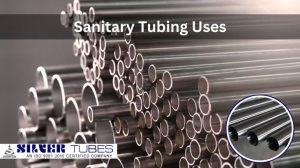Stainless steel is a popular choice of material for various industries, including construction, manufacturing, and transportation. Its durability, corrosion resistance, and ability to withstand high pressure and temperature make it an ideal choice for different applications. Two of the most common stainless steel products are tubes and pipes. While many people use these terms interchangeably, they are not the same or intended for the same applications. This blog will compare stainless steel tubes and pipes regarding their differences and similarities.
What is Stainless Steel Tubes?
Stainless steel tubes are hollow cylindrical sections made from corrosion-resistant and rust-resistant alloy steel. They can withstand various temperatures, pressures, and corrosive materials, making them ideal for engineering applications such as piping systems, exhausts, automotive parts, and medical equipment. They are also popular in architectural projects due to their durability and attractive finish.
What is Stainless Steel Pipes?
Stainless steel pipes are used in various applications, from plumbing and building construction to industrial and commercial processes. They provide corrosion resistance, durability, strength, and reliability. Stainless steel pipes come in various shapes and sizes, such as round, square, rectangular or even custom-made shapes depending on the application they’re being used for. The most common grades are 304 & 316, which offer excellent chemical resistance against harsh environments.
Comparison between Stainless Steel Tubes vs Stainless Steel Pipes
Size and Shape
Stainless steel tubes are typically smaller in diameter and have a thinner wall thickness than stainless steel pipes. Tubes come in several shapes, including round, square, and rectangular, while pipes are usually round. Furthermore, tubes are available in different lengths, whereas pipes mostly have standard lengths. Pipes are typically used for conveying fluid or gas, whereas tubes are used in structural applications where strength and weight are crucial.
Manufacturing Process
Stainless steel tubes and pipes are usually made through a similar process, but some differences exist. Tubes are made by cold-drawing or cold-rolling process, which involves pulling the metal over a mandrel or die. This process results in a seamless or welded hollow tube. On the other hand, pipes are typically produced by welding flat stainless steel sheets. The welding process can create a seam that could be susceptible to corrosion. Therefore, pipes may require additional finishing to avoid corrosion, while tubes already have a smooth surface.
Strength and Rigidity
Stainless steel tubes have an excellent strength-to-weight ratio due to their thinner wall thickness and smaller diameter. They are often used in structural applications requiring rigidity, such as construction, aerospace, and automotive industries. Pipes are designed to carry fluids or gases and can withstand high pressure. They are usually thicker and more rigid than tubes, making them ideal for applications where strength is the priority.
Corrosion Resistance
Stainless steel is known for its corrosion resistance, which is ideal for harsh applications. Both tubes and pipes are stainless steel and offer excellent corrosion resistance. However, welded pipes may be more susceptible to corrosion in the welded areas, while tubes have a smooth surface that reduces the chances of corrosion. Therefore, tube products are often used in chemical and pharmaceutical industries where cleanliness and hygiene are crucial.
Cost
Stainless steel tubes and pipes are relatively expensive compared to other materials. However, the cost varies depending on the size, length, and type of stainless steel used. Generally, tubes are cheaper than pipes due to their smaller size and thinner wall thickness. But pipes are more cost-effective when large quantities are used due to their standardized lengths.
Conclusion:
In summary, stainless steel tubes and pipes have different applications and characteristics. While tubes are suitable for structural applications that require rigidity and lightweight, pipes are ideal for conveying gas and fluids at high pressure. Both products offer excellent corrosion resistance, but tubes have a smoother surface that reduces corrosion chances. The manufacturing process also differs, with tubes usually made through a process that results in a seamless product, while pipes may have welding seams that could be susceptible to corrosion. Ultimately, the choice between a stainless steel tube and pipe will depend on the application’s requirements, budget, and manufacturing needs.






